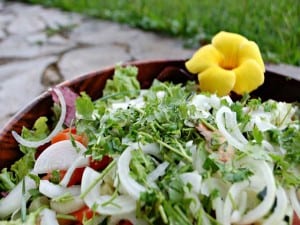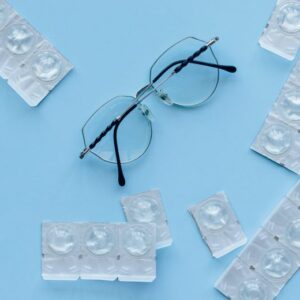
By: Amanda Froelich,
True Activist.
You feel you’re doing your body a service by drenching your green salad, complete with carrots, peas, tomato, and cucumber with a dressing designed to make the plant food more appealing. What you don’t realize, as most consumers attempting a half-healthy approach to dining don’t, is that while the portion of greens is supremely healing, the dressing numbing its flavors is not.
Conventionally produced salad dressings fail to hit the target when it comes to being as healthy as the food it covers. While certain companies strive to share flavoring that’s wholesome, organically based, and still delicious, they tend to be quite expensive. The issue is in the chemicals in less expensive and popular brands, which follow.
There is a solution, however, in choosing to make your own delectable dressings at home. You’ll realize by reading through the following ingredients that the necessity to include preservatives and chemicals is no longer necessary if you take it upon yourself to create health creating food alternatives instead.
Canola Oil and Soybean Oil: Genetically modified, low-quality oils in terms of health-promoting. The most optimal oils to use are organic and low-processed, such as Extra Virgin Olive Oil.
Xantham Gum or Food Starch: Binders/thickeners that create a gummy texture. Relatively neutral in terms of health, but if one shakes their own dressing enough, it will also thicken. Home dressing alternative thickeners could be cashews, sunflower seeds, and Irish moss.
MSG: A tasty and detrimental food additive that makes everything it touches taste fake (and arguably, to some, delicious). From migraines, seizures, and weight gain, to high blood pressure, stroke, and other health problems, it’s an additive not to be messed with, or at least definitely not consumed.
Source: http://www.globalhealingcenter.com/natural-health/harmful-effects-of-monosodium-glutamate-msg/
Polysorbate 60: An emulsifier that keeps the ingredients together. If one shakes their own dressing enough, it’ll stay together as well.
Potassium Sorbate: A preservative that will keep foods ‘edible’ for months in a warehouse. A freshly made dressing will spoil after a week or two, a sign that it’s meant for human consumption.
Natural and Artificial Flavors: Linked with neural damage, hyperactivity, and even common migraines (Red #40, Yellow #5 most specifically), artificial flavors are ingredients one should strive hard to exclude from their food.
Artificial Sweeteners: Most commonly used is Aspartame, an ingredient known to damage kidneys, create birth defects, contribute to Multiple Sclerosis, exacerbate Lymphoma, and create Arthritis, among other issues. (Source). Chances are if it says ‘Low Fat’, it’s because it’s artificially sweetened and has chemicals to create taste.
See more: http://www.huffingtonpost.com/dr-mercola/americas-deadliest-sweete_b_630549.html
Caramel Color: It’s often overlooked as it seems to be in everything now days, Coca Cola, candies, etc… but it’s not just a fun addition to processed foods, it’s highly toxic. The contaminant 4-methylimidazole is known to cause Cancer. Because it’s consumed in any brown-colored packaged or bottled food, large doses over a period of time is a definite concern, seeing as most Americans consume almost 60% of their food processed.
See more at: http://www.thesweetbeet.com/caramel-color-may-be-toxic/#sthash.hPyXXuAG.dpuf
EDTA: It’s a chemical that neutralizes bits of metal that are in the dressing from the factory’s pipe’s and machines used in its production. It’s added in order to prevent the metal from deteriorating the dressing’s ingredients in their long shelf life together. It seems if you want to avoid ingesting metals, make your own dressing.
It’s easy to refrain from the consumption of factory-made ingredients and still enjoy your savory salads. Many free recipes are also to be found all over the web and in healthy cook books. For convenience, a very simple and tasty home made salad dressing alternative also follows:
Greek Salad Dressing:
This dressing is flavorful, easy to make, and is a healthy home made option to adopt.
Ingredients:
½ Cup Extra Virgin Olive Oil or Flax seed Oil
1/3 Cup Fresh Lemon Juice
½ teaspoon Apple Cider Vinegar
1 Tablespoon Raw Honey or 1 Date
¼ Cup Fresh Oregano or Basil Leaves
¼ medium Tomato
1 Tablespoon Red Onion
2 Garlic Cloves, peeled
Pinch Cayenne
½ teaspoon Celtic Sea Salt (optional)
Directions:
1) In a blender, combine all ingredients until creamy and smooth. Pour over a lovely salad of greens, vegetables, and your choice of additional toppings.
Take control of what goes into your body and start with your salad. Becoming conscious of the damage most modern day fare has on the body is step 1; step 2 is finding alternatives and implementing them into your lifestyle and experiencing the benefits.


